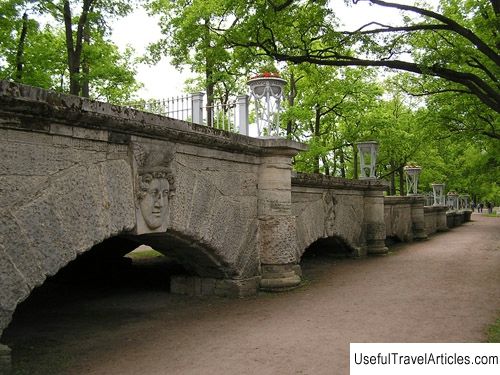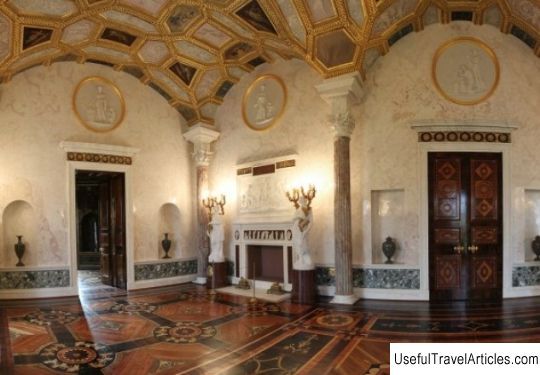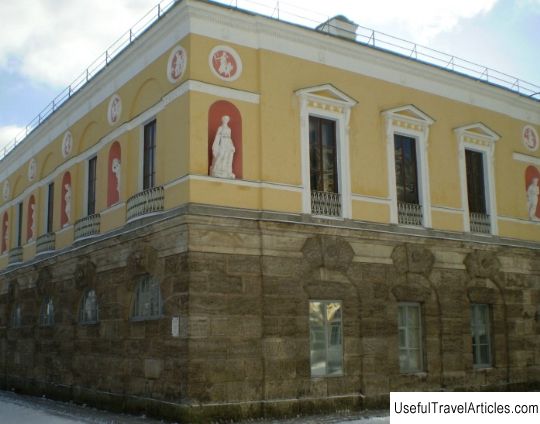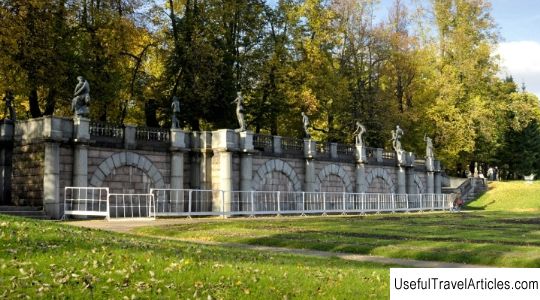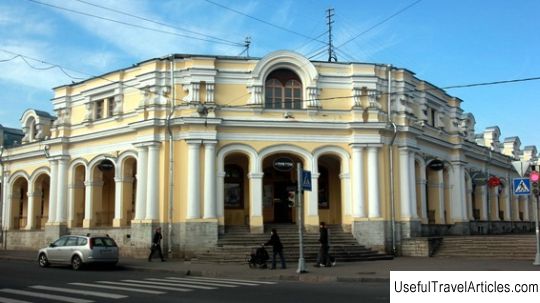Cameronova gallery description and photos - Russia - St. Petersburg: Pushkin (Tsarskoe Selo)
Rating: 7,9/10 (6769 votes) 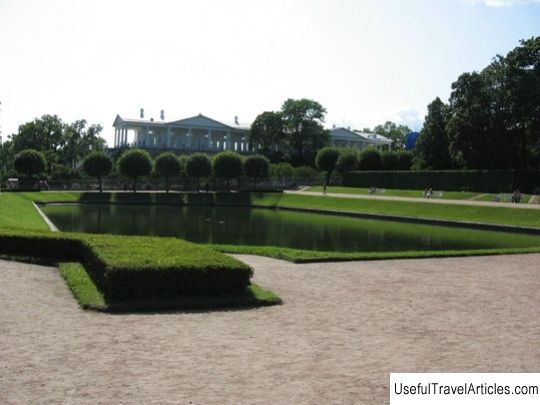
Cameronova gallery description and photos - Russia - St. Petersburg: Pushkin (Tsarskoe Selo). Detailed information about the attraction. Description, photos and a map showing the nearest significant objects. Photo and descriptionCameron's gallery was conceived by Catherine II for philosophical conversations and walks. The gallery created by Cameron is located on the border of the landscape and the regular parts of the Catherine Park, on a hillside. The height of the Cameron Gallery coincides with the height of the Catherine Palace, but due to the fact that this structure is located on a gentle slope, then as you move away from the palace, the height of the lower floor is greatly increased due to the uniform rise of its base. The basement of the gallery is made of hewn blocks of the Syas slab. The walls of the first floor are cut through by three-part window openings, the walls between them are lined with Pudost stone. The lower floor forms the basis for the second tier colonnade, which consists of 44 fluted white columns with Ionic capitals. Ch. Cameron slightly increased the spacing between the columns, deviating from the classic ratios of height and spacing between the columns, giving? thus, the colonnade has a special grace and lightness. The enlarged window openings of the glazed hall in the center of the second floor give it absolute transparency. The architect repeated the motive of the four-column porticoes several times: at the main entrances, they support the colonnade pediments, and on the elongated southern and northern facades, they are repeated only for decorative purposes. The frieze encircling the gallery is decorated with wreaths, and the cornice is decorated with lion masks. In the decoration of the first floor, C. Cameron used the Pudost stone, which was mined in the vicinity of St. Petersburg, in the village. Pudding; with its texture and color, this stone resembled “weathered” centuries-old antique stones. The construction of the gallery began in 1784. During its construction, some changes were made to the construction of the stairs leading to the second floor. According to the project, the staircase rose from the park only to the first tier; The two upper flights leading to the colonnade were added later at the direction of Catherine II: for example, staircases designed by the architect connected the colonnade with the lower floor. The changes made to the original project entailed corresponding changes in the grid pattern. It was originally planned to decorate the gallery with a gilded iron lattice; the new grille, which has survived to this day, was painted white. With ingenious simplicity, Cameron decided to decorate the colossal staircase with monumental bronze statues of Flora and Hercules. In 1787, the construction of the gallery was completed. To this day, its top floor remains the same as it was two hundred years ago. Only the premises on the first floor were redesigned, which were used as living rooms for ladies in waiting and ladies of the court. The colonnade served as a kind of belvedere: an amazing view of the landscape park and the Big Pond opened from it. In 1780-1790 on the second floor of the gallery were installed bronze busts, cast in the workshop of the St. Petersburg Academy of Arts. The collection of sculptures that adorn the Cameron Gallery, at the request of Catherine II, constitutes a single cycle and embodies a certain ideology and reflects the worldview of the Empress. Since 1788, Catherine with her secretary A. Khrapovitsky on the southern facade of the Cold Bath pavilion and on the colonnade, she placed bronze copies of famous antiques - busts of great philosophers and writers of antiquity, historical and mythological heroes. She included in her collection images of Plato, the goddess Juno, Homer, Seneca, Ovid, Demosthenes and Cicero. Among the first to be installed was a bust of Seneca. And this is no coincidence. This ancient Roman playwright and philosopher, who believed that under a just ruler, monarchy can be a guarantee of the prosperity of the state, belongs to Catherine's favorite expression "Only a wise man knows how to be a king." A. Macedonian, with whom the empress felt some inner kinship, since she, like the great commander of antiquity, was distinguished by decisiveness, courage and ambition. In 1791. Catherine II ordered a bust of Caesar. Along with "Ajax", "Minerva", "Mercury", which were taken from the Concert Hall of Tsarskoye Selo, Catherine II personally approved for casting the busts of wise sovereigns and great generals: Germanicus, Scipio Africanus, Marcus Aurelius, Septimius Severus, Titus, Vespasiana. The empress's order was executed in 1794. In June 1793, Catherine ordered to send her a register of the "best busts" worthy of being installed on the colonnade, and placed a bust of M. Lomonosov. Thus, the collection of the Empress's bronze idols came to a logical conclusion. Catherine II personally approved for casting the busts of wise sovereigns and great generals: Germanicus, Scipio Africanus, Marcus Aurelius, Septimius Severus, Titus, Vespasian. The empress's order was executed in 1794.                      We also recommend reading Trinity Church in Gervyaty description and photos - Belarus: Grodno region Topic: Cameronova gallery description and photos - Russia - St. Petersburg: Pushkin (Tsarskoe Selo). |
